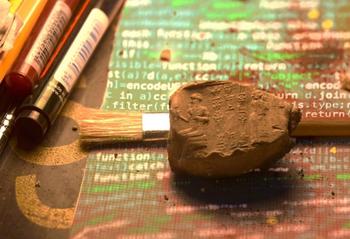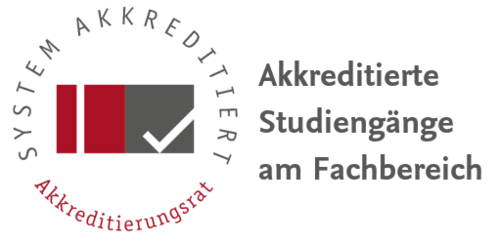New academy project ‘KIŠIB’ with the participation of Near Eastern Archaeology at Freie Universität Berlin
News from Dec 03, 2024
On 22 November 2024, the Joint Science Conference decided to include the inter-academic project ‘KIŠIB. Digital Corpus of Ancient West Asian Seals and Sealings’ into the Academies' Program of the Union of the German Academies of Sciences and Humanities. KIŠIB is the Sumerian logogram for ‘seal’ and, in ancient Mesopotamia, referred to both stamp-shaped and cylindrical seals, as well as sealed clay closures and cuneiform documents. Sealing was particularly popular among people living in present-day Iraq and Syria from the 4th to the 1st millennium BCE. This resulted in the oldest extensive corpus of images that has survived from the region. Today, thousands of Mesopotamian seals and sealed objects can be found in museums and collections worldwide. Their significance for visual, social, and cultural history has so far only been recognized by a small circle of experts.
The inter-academic project led by Prof. Dr Elisa Roßberger, Institute for Near Eastern Archaeology at the Freie Universität Berlin, and Prof. Dr Adelheid Otto, Institute for Near Eastern Archaeology at the Ludwig-Maximilians-Universität Munich, aims to change this. An interdisciplinary team (archaeology, ancient Near Eastern studies, Digital Humanities,IT) will start work in 2025 with one research group at the Berlin-Brandenburg Academy of Sciences and Humanities (BBAW) in Berlin and another at the Bavarian Academy of Sciences and Humanities (BAdW)/Ludwig-Maximilians-Universität München; the planned duration is 16 years.
It aims to build up a representative digital corpus of around 80,000 seals. The depictions and inscriptions engraved on the seals provide detailed insights into ancient networks of social, political, economic, religious, and artistic interaction, as well as the transmission of cultural knowledge, evolving forms of visual communication, and changing ideologies.
KIŠIB will make these networks comprehensively accessible to researchers and everyone interested in the arts and cultures of ancient West Asia. Artefact-, image- and text-related data will be collected, segmented, and annotated using machine learning. International and interdisciplinary knowledge exchange with curating institutions, other projects for the digital exploration of ancient West Asia, NFDI4Objects, and, in particular, with colleagues in West Asian countries, play a central role in the project.
Access the BBAW press release here:


